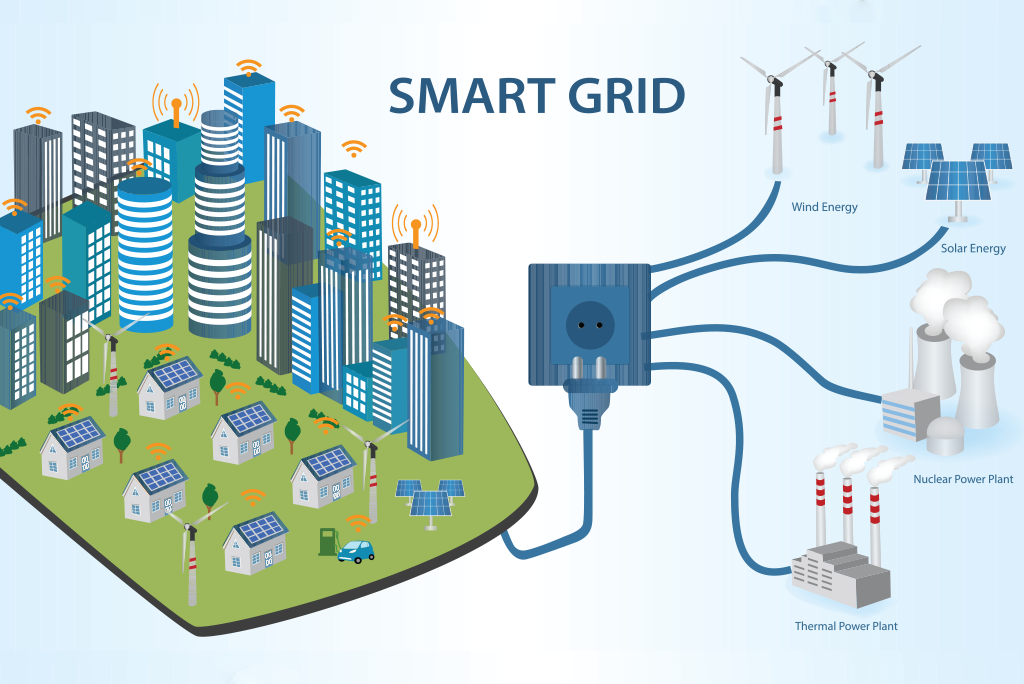The global shift towards renewable energy sources, such as solar and wind power, presents both opportunities and challenges for modern electrical grids. Smart grid technologies are pivotal in facilitating the seamless integration of renewable energy into existing power infrastructures, optimizing energy distribution, enhancing grid stability, and promoting sustainability. This blog explores the role of smart grid technologies in renewable energy integration, their benefits, practical applications, and the transformative impact on the energy sector.
Understanding Smart Grid Technologies
Smart grids leverage advanced digital communication and control technologies to monitor and manage electricity generation, transmission, distribution, and consumption in real-time. Unlike traditional grids, smart grids enable bidirectional communication between utilities, consumers, and distributed energy resources (DERs) like solar panels and wind turbines. This bidirectional flow of information and energy supports efficient energy management and grid operations.
Benefits of Smart Grid Technologies for Renewable Energy Integration
- Enhanced Grid Flexibility and Resilience:
Smart grids dynamically balance supply and demand by adjusting to fluctuations in renewable energy generation. Grid operators can forecast and manage energy flows more accurately, minimizing grid instability and blackout risks. - Optimized Energy Distribution:
Advanced sensors and analytics optimize energy distribution by routing electricity from renewable sources to areas with high demand. Smart grid technologies prioritize clean energy utilization, reduce transmission losses, and improve overall grid efficiency. - Integration of Distributed Energy Resources (DERs):
Smart grids integrate DERs, such as rooftop solar panels and energy storage systems, into the grid infrastructure. By aggregating and managing these decentralized resources, smart grids enhance grid reliability, support grid-balancing services, and empower consumers to participate in energy markets. - Demand Response and Energy Efficiency:
Smart grid applications enable demand response programs that incentivize consumers to adjust their energy consumption patterns based on real-time pricing or grid conditions. This demand-side management reduces peak demand, lowers electricity costs, and enhances overall energy efficiency. - Real-Time Monitoring and Predictive Maintenance:
IoT-enabled devices and sensors provide real-time monitoring of grid assets, detecting potential faults or failures before they escalate. Predictive maintenance strategies minimize downtime, extend equipment lifespan, and optimize grid reliability.
Practical Applications of Smart Grid Technologies
- Grid Automation and Control Systems:
SCADA (Supervisory Control and Data Acquisition) systems and advanced control algorithms optimize grid operations, manage voltage levels, and coordinate renewable energy integration across diverse geographic regions. - Energy Storage and Virtual Power Plants (VPPs):
Smart grids leverage energy storage technologies, such as batteries and pumped hydroelectric storage, to store excess renewable energy for later use. VPPs aggregate multiple DERs to operate as virtual power plants, providing grid stabilization services and supporting grid balancing. - Advanced Metering Infrastructure (AMI):
Smart meters and AMI enable real-time metering, billing, and energy consumption monitoring. Consumers gain insights into their energy usage patterns, enabling informed decisions on energy conservation and efficiency measures. - Microgrids and Peer-to-Peer Energy Trading:
Microgrids powered by smart grid technologies offer localized energy generation, distribution, and consumption within communities or industrial complexes. Peer-to-peer energy trading platforms enable direct transactions between energy producers and consumers, fostering energy independence and grid resilience. - Cybersecurity and Grid Resilience:
Smart grid cybersecurity measures safeguard critical infrastructure from cyber threats and unauthorized access. Encryption protocols, anomaly detection systems, and cybersecurity frameworks protect data integrity and ensure uninterrupted grid operations.
Challenges and Considerations
- Interoperability and Standardization: Ensuring compatibility and interoperability among diverse smart grid technologies and legacy systems requires standardized communication protocols and integration frameworks.
- Data Privacy and Security: Protecting sensitive consumer data and grid infrastructure from cybersecurity threats, data breaches, and unauthorized access is paramount for maintaining trust and reliability.
- Regulatory Frameworks and Policy Support: Establishing regulatory frameworks that incentivize investments in smart grid technologies, promote renewable energy integration, and address regulatory barriers to grid modernization.
- Cost and Financial Viability: The upfront costs of deploying smart grid technologies and upgrading existing infrastructure may pose financial challenges for utilities and stakeholders. Cost-benefit analyses and financial incentives are essential for encouraging investments in smart grid solutions.
- Public Awareness and Stakeholder Engagement: Educating consumers, policymakers, and stakeholders about the benefits of smart grid technologies, renewable energy integration, and sustainable energy practices fosters public acceptance and support for grid modernization initiatives.
From Our Editorial Team
Our Editorial team comprises of over 15 highly motivated bunch of individuals, who work tirelessly to get the most sought after curated content for our subscribers.


